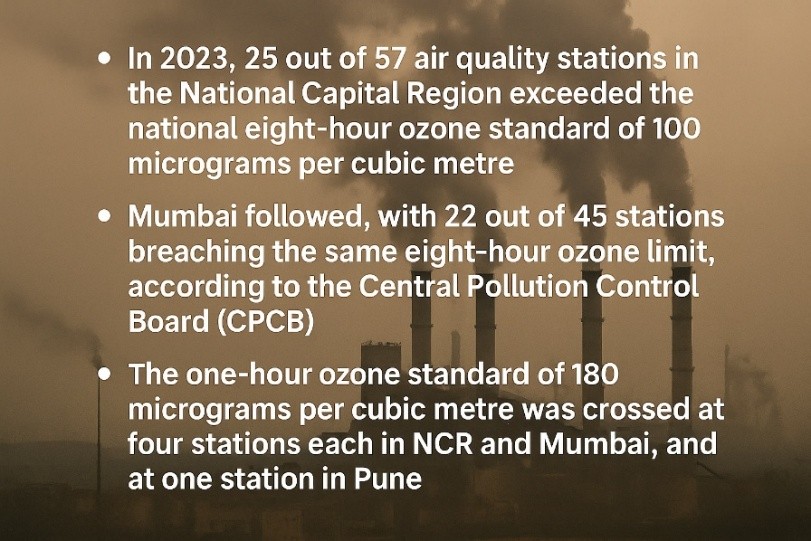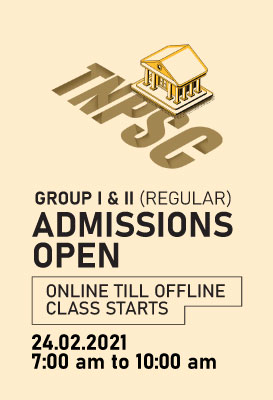PREVIOUS
India’s Ozone Pollution
October 2 , 2025
11 hrs 0 min
21
0
- In 2023, 25 out of 57 air quality stations in the National Capital Region exceeded the national eight-hour ozone standard of 100 micrograms per cubic metre.
- Mumbai followed, with 22 out of 45 stations breaching the same eight-hour ozone limit, according to the Central Pollution Control Board (CPCB).
- The one-hour ozone standard of 180 micrograms per cubic metre was crossed at four stations each in NCR and Mumbai, and at one station in Pune.
- CPCB attributed high ozone levels to emissions from transport, industries, power plants, and secondary pollutants formed from volatile organic compounds (VOCs) and nitrogen oxides (NOx).
- Residential and agricultural emissions of carbon monoxide (CO) and methane (CH₄) also contribute to ground-level ozone formation.
- From April to July 2024, 21 of 57 stations in NCR exceeded the safe one-hour ozone limit.
- No stations in Mumbai crossed this limit.

Leave a Reply
Your Comment is awaiting moderation.


